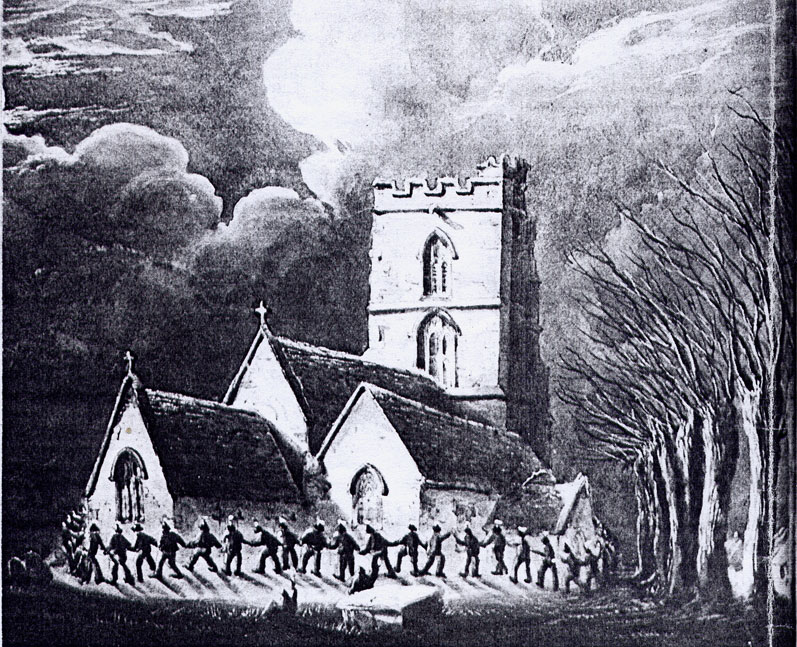Church of St Lawrence, Rode on:
[Wikipedia]
[Google]
[Amazon]
The Church of St Lawrence in Rode,  The church is the setting for an annual ceremony known as
The church is the setting for an annual ceremony known as
Somerset
( en, All The People of Somerset)
, locator_map =
, coordinates =
, region = South West England
, established_date = Ancient
, established_by =
, preceded_by =
, origin =
, lord_lieutenant_office =Lord Lieutenant of Somerset
, lord_ ...
, England, dates from the late 14th and early 15th century. It was restored in 1874 by Charles Edward Davis and is a Grade I listed building
In the United Kingdom, a listed building or listed structure is one that has been placed on one of the four statutory lists maintained by Historic England in England, Historic Environment Scotland in Scotland, in Wales, and the Northern Irel ...
.
It is likely that there was a previous church on the same site, and some fragments of a Norman
Norman or Normans may refer to:
Ethnic and cultural identity
* The Normans, a people partly descended from Norse Vikings who settled in the territory of Normandy in France in the 10th and 11th centuries
** People or things connected with the Norm ...
doorway survive.
The church underwent significant work, initially to the pulpit gallery and bells in 1774, and Victorian restoration
The Victorian restoration was the widespread and extensive refurbishment and rebuilding of Church of England churches and cathedrals that took place in England and Wales during the 19th-century reign of Queen Victoria. It was not the same proc ...
between 1873 and 1874.
The tower has contained bells since the 16th century, however in 1753 Thomas Bilbie of the Bilbie family
The Bilbie family were bell founders and clockmakers based initially in Chew Stoke, Somerset and later at Cullompton, Devon in south-west England from the late 17th century to the early 19th century.
Their importance to the local economy and ...
of Chew Stoke
Chew Stoke is a small village and civil parish in the affluent Chew Valley, in Somerset, England, about south of Bristol and 10 miles north of Wells. It is at the northern edge of the Mendip Hills, a region designated by the United Kingdom ...
cast a new peel of six bells. One was recast by the Whitechapel Bell Foundry
The Whitechapel Bell Foundry was a business in the London Borough of Tower Hamlets. At the time of the closure of its Whitechapel premises, it was the oldest manufacturing company in Great Britain. The bell foundry primarily made church bells ...
in 1817. These hung in the tower into the 20th century but were not used because of safety concerns. The wooden frame was replaced by one made of steel between 2003 and 2006 when the bells were rededicated and could be rung again.
 The church is the setting for an annual ceremony known as
The church is the setting for an annual ceremony known as Clipping the church
Clipping the church is an ancient custom that is traditionally held in England on Easter Monday or Shrove Tuesday or a date relevant to the Saint associated with the church. The word "clipping" is Anglo-Saxon in origin, and is derived from the w ...
. It is an ancient custom that is traditionally held on Easter Monday or Shrove Tuesday
Shrove Tuesday is the day before Ash Wednesday (the first day of Lent), observed in many Christian countries through participating in confession and absolution, the ritual burning of the previous year's Holy Week palms, finalizing one's Lenten ...
in the United Kingdom. The word "clipping" is Anglo-Saxon in origin, and is derived from the word "''clyp-pan''", meaning "embrace" or "clasp". ''Clipping the church'' involves either the church congregation or local children holding hands in an outward-facing ring around the church. Once the circle is completed onlookers will often cheer and sometimes hymns are sung. At Rode the circle faces inwards and participants dance to the left and right before rushing inwards and cheering. John Michell
John Michell (; 25 December 1724 – 21 April 1793) was an English natural philosopher and clergyman who provided pioneering insights into a wide range of scientific fields including astronomy, geology, optics, and gravitation. Considered "o ...
and Margaret Murray
Margaret Alice Murray (13 July 1863 – 13 November 1963) was an Anglo-Indian Egyptologist, archaeologist, anthropologist, historian, and folklorist. The first woman to be appointed as a lecturer in archaeology in the United Kingdom, she work ...
suggest that the nocturnal ritual at Rode may have had non-Christian (possibly neopagan) motivations.
The parish is part of the Hardington Vale benefice within the Frome
Frome ( ) is a town and civil parish in eastern Somerset, England. The town is built on uneven high ground at the eastern end of the Mendip Hills, and centres on the River Frome. The town, about south of Bath, is the largest in the Mendip d ...
deanery.
See also
*Grade I listed buildings in Mendip
Mendip is a local government district in the English county of Somerset. The Mendip district covers a largely rural area of ranging from the Mendip Hills through on to the Somerset Levels. It has a population of approximately 11,000. The admin ...
* List of Somerset towers
The Somerset towers, church towers built in the 14th to 16th centuries, have been described as among England's finest contributions to medieval art. The paragraphs and descriptions below describe features of some of these towers. The organization ...
References
{{DEFAULTSORT:Rode, Saint Lawrence 14th-century church buildings in England Grade I listed churches in Somerset Church of England church buildings in Mendip District Grade I listed buildings in Mendip District